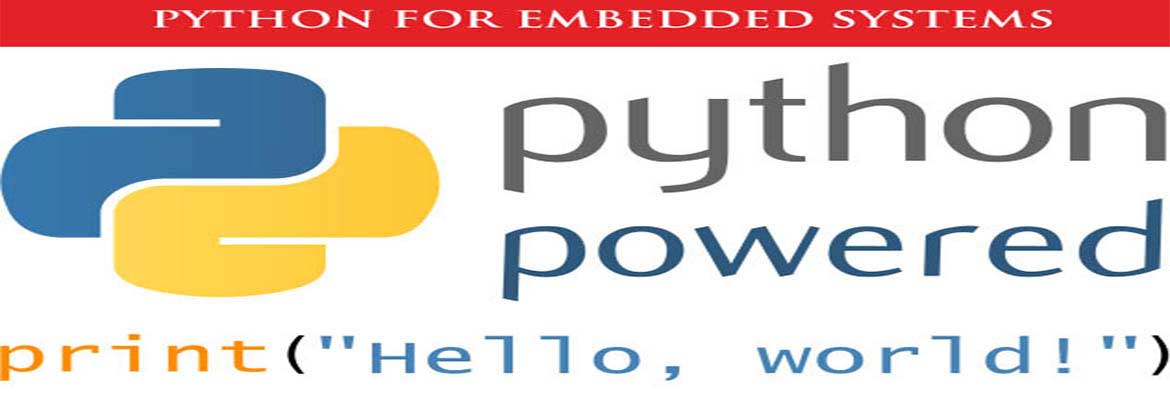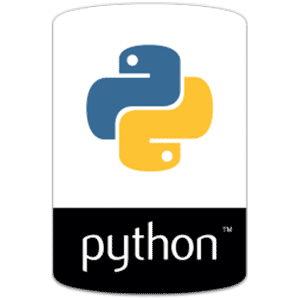
About Embedded Systems in Python Training
Embedded system applications are mainly written in low level programming languages like C, Assembly etc. Scripting languages like Perl and python are used by embedded developers in following cases:
Automating tests:
Python is heavily used for writing scripts which trigger and test various parameters of IUT (Implementation under test). You can write a framework which allows writing scripts in python which will send and receive data over serial port to communicate with device firmware. We would also like to point out that the kind of python used here is nothing like that used by web programmers. These scripts mainly focus on exercising various parameters of systems. And once again here also you will find yourself playing a lot with individual bytes/bits thus, using low level list manipulation.
Parsing logs and providing results at higher abstractions:
Here you use python to parse log files and come up with very high level logs which somebody not familiar with exact system can read and understand. For example you may run tests for a 'Command Interpreter system' at various baud rates and finally come up with a high level result providing information about Baud rate cutoff over or below which system does not work.
EMBEDDED SYSTEMS IN PYTHON HIGHLIGHTS
Course Duration
1 Month
8 Weekends
Learners
50000
Delivery Mode
Classroom Training
Apply Online

An Introduction to Python
 Introduction
Introduction
 A Brief History of Python
A Brief History of Python Python Versions
Python Versions Installing Python
Installing Python
 Environment Variables
Environment Variables Executing Python from the Command Line
Executing Python from the Command Line IDLE
IDLE Editing Python Files
Editing Python Files Python Documentation
Python Documentation Getting Help
Getting Help Dynamic Types
Dynamic Types Python Reserved Words
Python Reserved Words Naming Conventions
Naming Conventions
Basic Python Syntax
 Basic Syntax
Basic Syntax
 Comments
Comments String Values
String Values String Methods
String Methods
 The format Method
The format Method String Operators
String Operators Numeric Data Types
Numeric Data Types Conversion Functions
Conversion Functions Simple Output
Simple Output Simple Input
Simple Input The % Method
The % Method 1The print Function
1The print Function
Language Components
 Indenting Requirements
Indenting Requirements
 The if Statement
The if Statement Relational and Logical Operators
Relational and Logical Operators Bit Wise Operators
Bit Wise Operators The while Loop
The while Loop break and continue
break and continue The for Loop
The for Loop
 Introduction
Introduction
 Lists
Lists Tuples
Tuples Sets
Sets Dictionaries
Dictionaries Sorting Dictionaries
Sorting Dictionaries Copying Collections
Copying Collections Summary
Summary
 Threading text
Threading text Changing number of columns
Changing number of columns
 Changing text alignment
Changing text alignment Character style
Character style Find and Replace and Spell check
Find and Replace and Spell check Text on a path
Text on a path

Functions
 Introduction
Introduction
 Defining Your Own Functions
Defining Your Own Functions Parameters
Parameters Function Documentation
Function Documentation
 Keyword and Optional Parameters
Keyword and Optional Parameters Passing Collections to a Function
Passing Collections to a Function Variable Number of Arguments
Variable Number of Arguments Scope
Scope Functions -
Functions - Passing Functions to a Function
Passing Functions to a Function map
map filter
filter Mapping Functions in a Dictionary
Mapping Functions in a Dictionary Lambda
Lambda Inner Functions
Inner Functions Closures
Closures
Modules
 Modules
Modules
 Standard Modules - sys
Standard Modules - sys Standard Modules - math
Standard Modules - math Standard Modules - time
Standard Modules - time
 The dir Function
The dir Function
Exceptions
 Errors
Errors
 Runtime Errors
Runtime Errors The Exception Model
The Exception Model Exception Hierarchy
Exception Hierarchy Handling Multiple Exceptions
Handling Multiple Exceptions raise
raise assert
assert

 Introduction
Introduction
 Data Streams
Data Streams Creating Your Own Data Streams
Creating Your Own Data Streams Access Modes
Access Modes Writing Data to a File
Writing Data to a File Reading Data From a File
Reading Data From a File Additional File Methods
Additional File Methods Using Pipes as Data Streams
Using Pipes as Data Streams Handling IO Exceptions
Handling IO Exceptions Working with Directories
Working with Directories Metadata
Metadata The pickle Module
The pickle Module
Classes in Python
 Classes in Python
Classes in Python
 Principles of Object Orientation
Principles of Object Orientation Creating Classes
Creating Classes Instance Methods
Instance Methods
 File Organization
File Organization Special Methods
Special Methods Class Variables
Class Variables Inheritance
Inheritance Polymorphism
Polymorphism Type Identification
Type Identification Custom Exception Classes
Custom Exception Classes
 Compound path
Compound path
 Slicing a path with scissor
Slicing a path with scissor Adding end shape to open path
Adding end shape to open path Creating texture effects
Creating texture effects
 Inline graphics
Inline graphics
Writing GUIs in Python
 Introduction
Introduction
 Components and Events
Components and Events An Example GUI
An Example GUI The Tk Widget
The Tk Widget
 Button Widgets
Button Widgets Entry Widgets
Entry Widgets Button Widgets
Button Widgets Entry Widgets
Entry Widgets Text Widgets
Text Widgets Checkbutton Widgets
Checkbutton Widgets Radiobutton Widgets
Radiobutton Widgets Listbox Widgets
Listbox Widgets Frame Widgets
Frame Widgets 1 Menu Widgets
1 Menu Widgets Toplevel Widgets
Toplevel Widgets Dialogs
Dialogs
 What is CGI
What is CGI
 HTML
HTML HTML Forms
HTML Forms A Guestbook Application
A Guestbook Application What Can Go Wrong!
What Can Go Wrong! HTML Tables
HTML Tables The CGI Script
The CGI Script Rendering of the Script
Rendering of the Script

Network Programming
 Networking Fundamentals
Networking Fundamentals
 The Client/Server Model
The Client/Server Model The socket Module
The socket Module A Client Program
A Client Program
 A Server Program
A Server Program
 Maintaining consistency
Maintaining consistency Synchronizing book document
Synchronizing book document
 Updating table of content
Updating table of content Indexing the book
Indexing the book
EMBEDDED SYSTEM CONCEPTS
 Python SERIAL libraries
Python SERIAL libraries
 Python AUDIO libraries
Python AUDIO libraries Python Bluetooth libraries
Python Bluetooth libraries Python GPIO libraries
Python GPIO libraries
 Python FIRMATA libraries
Python FIRMATA libraries Python Camera libraries
Python Camera libraries Python & Node.JS
Python & Node.JS Python & MQTT
Python & MQTT
